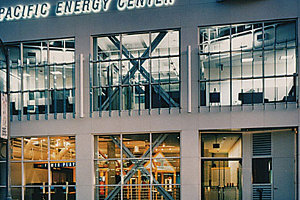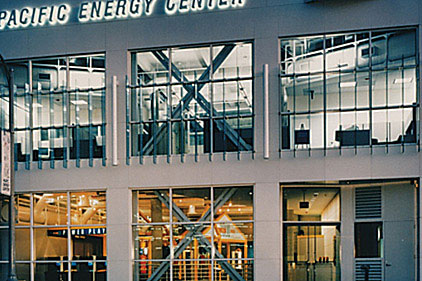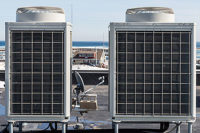Most companies want to decrease their energy consumption, either for financial reasons, or to be active in reducing their carbon footprint, or both — but some of them aren’t sure where to begin. When the only measure of a facility’s energy usage is the bill customers receive at the end of the month, they may feel their facility is more like the proverbial black hole: power goes in, business happens inside, but it’s not clear exactly how much energy is used where and when.
AUDIT HELP

|
|
More than 1,250 test equipment loans from this energy company helped customers boost their building performance and save 92.5 million kWh of electrical energy in 2011. |
To get an accurate breakdown of energy consumption, a common method is to conduct a short-term energy audit. In an audit, monitoring devices are installed for a period of time to measure all the circuits that are responsible for the overall energy usage of the facility. The resulting data are recorded, demonstrating what areas are consuming the most power. By comparing the consumption of these with industry averages, it’s possible to identify areas where energy can be saved.
Pacific Gas and Electric Company (PG&E) has long understood that businesses may need help with understanding their consumption patterns, and created the Pacific Energy Center (PEC) in San Francisco back in 1991 to provide such assistance. Primarily an educational and consulting resource, the PEC enlists industry experts to communicate best practices in energy conservation and sustainability Its mission is to help customers understand their building’s performance in order to reduce energy use and create better indoor environments.
A few years after the PEC opened its doors, it initiated the Tool Lending Library as a service to customers to help them understand and document their building’s performance.
“The Pacific Energy Center works with engineers, designers, facilities managers, building operators, stationary engineers, consulting agencies, and others to help them save energy or reduce energy demand” said Bill Pottinger, who manages the Center’s Tool Lending Library. “For example, a building manager or outside consultant may engage the PEC’s services to implement an energy-saving initiative or take advantage of one of PG&E’s incentives to reduce energy demand.”
The Pacific Energy Center’s Tool Lending Library contains an array of measurement tools that are loaned out to California utility customers free of charge for load studies up to 30 days or more in length. Among the most highly used tools are instruments that measure the power consumption of particular electrical circuits and record the measurements for future analysis. For this purpose, the library has amassed more than 160 power-logging data meters worth close to $300,000. This often-requested tool is the ELITEpro SP™ portable datalogging power meter manufactured by DENT Instruments of Bend, OR. ELITEpro data logging power meters can capture kWh/kW energy and demand data as well as virtually all relevant energy parameters for diagnostics and monitoring on three-phase or single-phase circuit installations. Unlike many other power loggers, ELITEpro SP meters require no external power to operate and are small enough to be installed inside a building’s electrical panels. This allows for increased safety, security, and reliability because no wires are exposed during the monitoring period.
The ELITEpro meters are programmed and set up for a monitoring session by plugging in a PC running DENT’s Windows-based ELOG™ software. ELOG graphically displays recorded data, performs analysis and facilitates automatic remote data collection. Data from ELOG is also easily exported to popular spreadsheet and database software packages for further examination.
THE PEC WALKS THE TALK
As evidence for the benefit of a detailed breakdown of energy consumption data, PG&E has used its library equipment to measure the specific energy usage at the PEC building itself. PEC staff monitored individual loads, logged power levels, and cross-checked the results against overall energy usage to verify that the building’s energy usage was indeed accounted for in the recordings. Once that was done, PEC staff compared the loads of the building to the common loads for other buildings of similar size and type, looking for consumption patterns that might need to be corrected.
“Through the Pacific Energy Center’s own energy audit, we found higher than expected baseline energy usage over the weekend,” said Pottinger. “We were able to track the problem down to the amount of safety illumination during unoccupied hours, and the amount of refrigeration needed in our commercial kitchen. To address this issue we reduced the wattage on weekends and identified more efficient refrigeration equipment when the existing equipment reaches the end of its useful life. We also found a boiler and an exhaust fan that were unnecessarily running constantly during the monitoring period.”
OVERALL PROGRAM RESULTS
In 2011, the PG&E Tool Lending Library completed over 1,250 test equipment loans to customers. Borrowers estimate that the monitoring projects supported by these loans helped reduce energy demand by 157 megawatts and save 92.5 million kWh of electrical energy in the year 2011.
“The Pacific Energy Center is proud to work alongside other utilities in California and beyond who have also started their own tool lending libraries,” Pottinger noted. “Our instruments are one of the many resources that can help customers better understand and manage their buildings’ energy use.” ES


